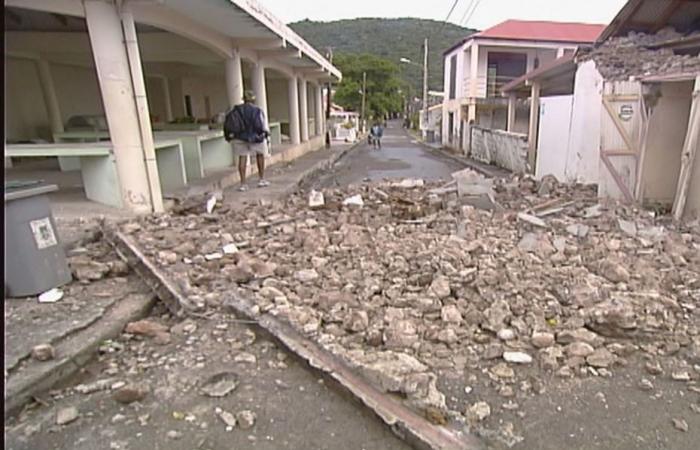
It was November 21, 2004. At 7:41 a.m. the entire Guadeloupe was shaken by a magnitude 6.3 earthquake. It is the island of Terre de Bas, located above the epicenter of the earthquake, which is the most affected. For a long time, its population had to live with the numerous aftershocks of the earthquake. 20 years later, this earthquake is still an enigma for scientists but also a cause of regret for some
This Sunday morning, the inhabitants of Terre de Bas were preparing to go to mass when the earthquake cut short all their intentions for the day. It will also, for several weeks, punctuate their lives, plunging them into permanent anxiety after each aftershock of the earthquake.
(See or review: Overseas Archives -2004: Les Saintes shaken by an earthquake measuring 6.3 on the Richter scale)
•
©Guadeloupe the 1st
Mishandled and becoming dangerous, the town's public buildings and church had to be rebuilt. Perhaps, moreover, to remove the traces of an event which was particularly traumatic for the population.
•
©Guadeloupe the 1st
20 years later, the current mayor has a completely different view of what was done. If she understands the state of mind in which the elected officials and the population were at that time, she no less regrets certain decisions taken at the time which deprive the Saintois and visitors of a visible memory of this Sunday, November 21 2004.
©Guadeloupe
•
©Guadeloupe the 1st
Beginning its report on this earthquake, the Globe Physical Institute expresses what happened on November 21, 2004:
On Sunday, November 21, 2004 at 7:41 a.m. (local time), a magnitude 6.3 earthquake shook Guadeloupe. The epicenter was located in the south of the Archipelago between the Saintes Islands and the northern tip of Dominica (Figure 1). Widely felt throughout Guadeloupe, the earthquake caused one victim in Trois-Rivières and significant damage in Les Saintes. It was followed by numerous aftershocks felt in Saintes in the south of Guadeloupe and in the north of Dominica.
Antilles Seismological Data Center (CDSA)
In fact, such an earthquake is considered to be an intraplate earthquake located on a system of normal faults running from Les Saintes to the north of Dominica. The two Îles des Saintes are located equidistant from the epicenter of the earthquake.
However, even today, scientists are wondering about the location of such an earthquake, more eccentric than the areas generally affected by this type of telluric movement.
20 years later, this earthquake called the “Saintes earthquake” is still a real subject of study for scientists. For the population of Les Saintes, there is a before and after November 2004. And if the reconstruction has erased the traces, the memories are still very present in our minds.





